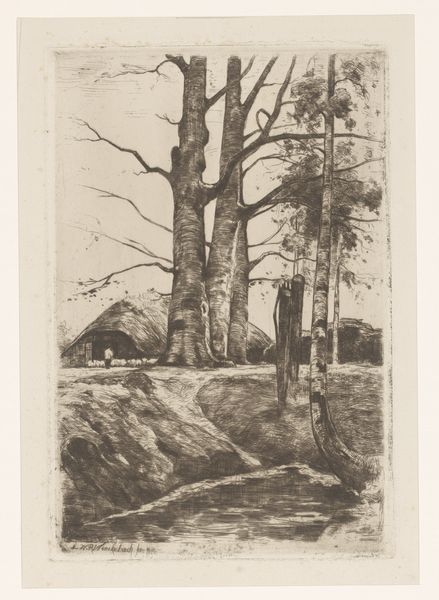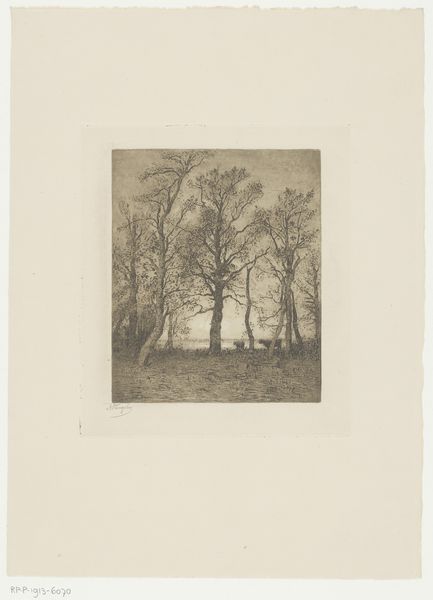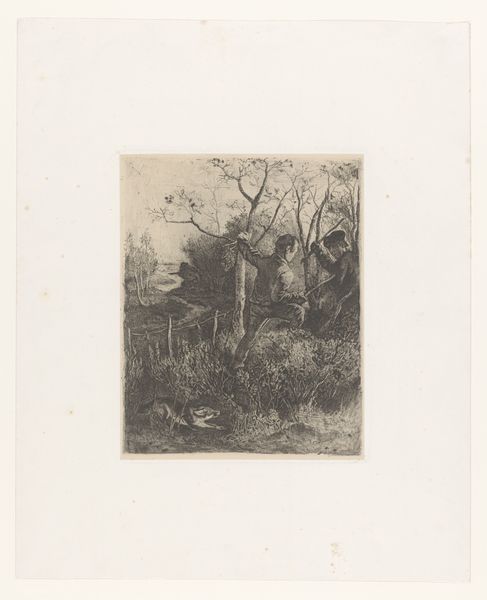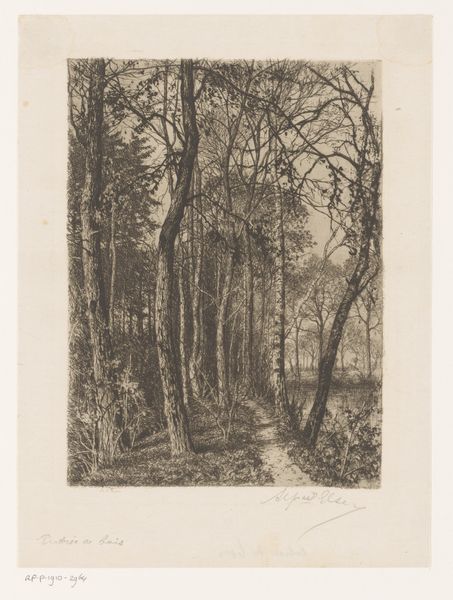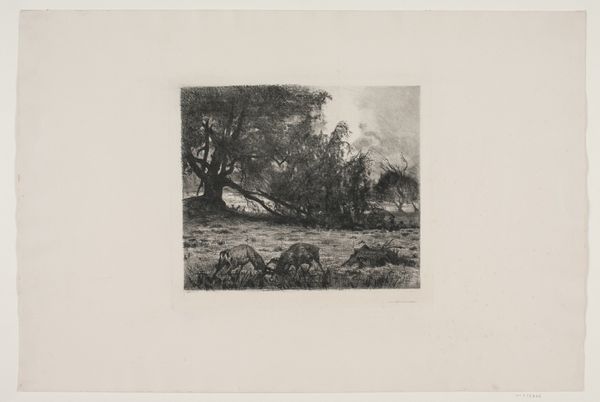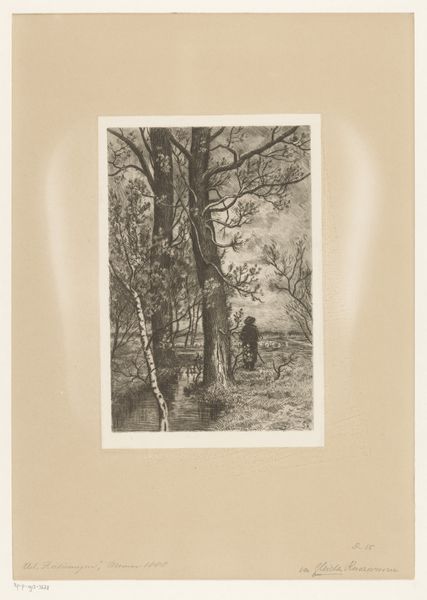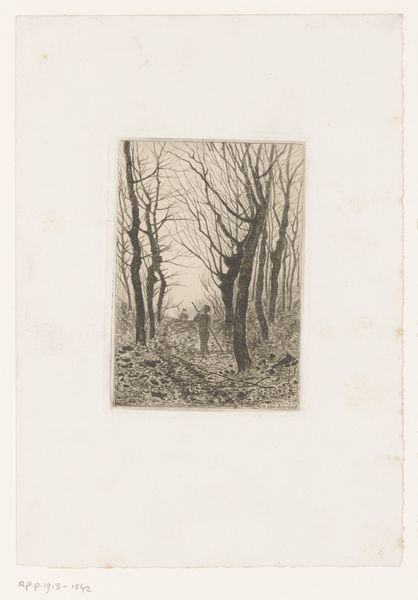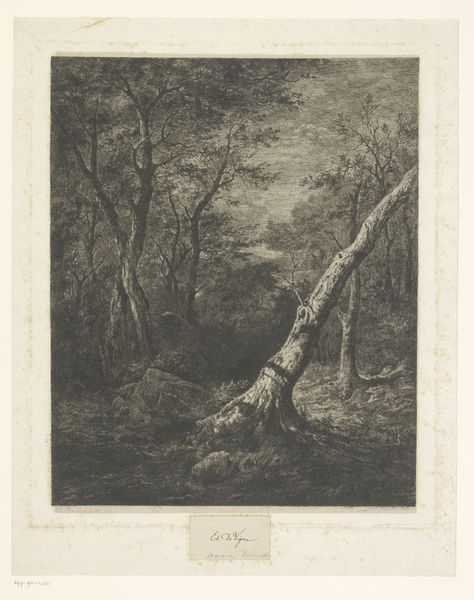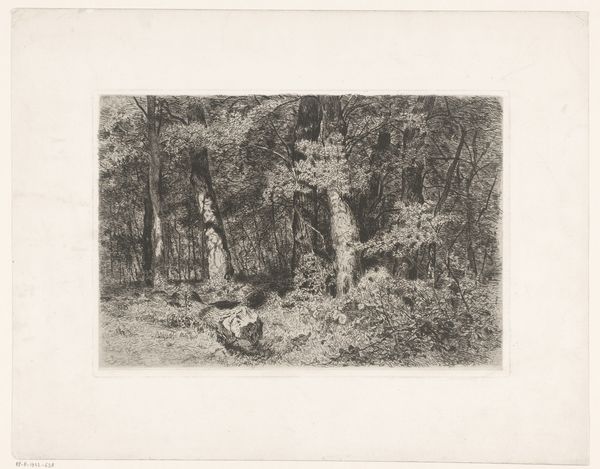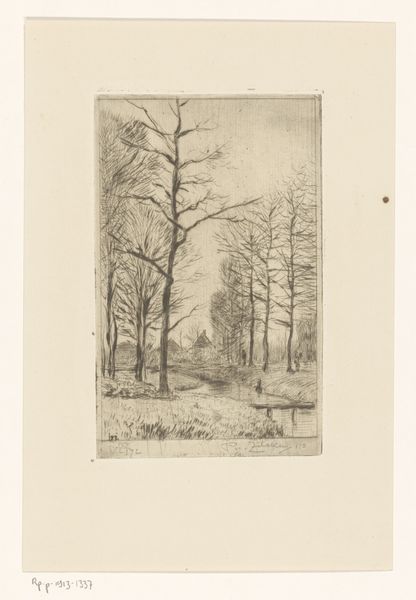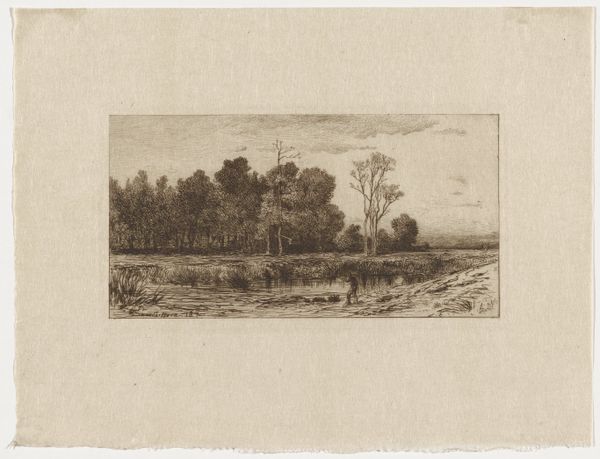
print, etching
# print
#
etching
#
landscape
#
realism
Dimensions: 10 1/4 x 7 11/16 in. (26.04 x 19.53 cm) (plate)12 5/8 x 9 3/4 in. (32.07 x 24.77 cm) (sheet)
Copyright: Public Domain
Peter Moran made this etching, "The Edge of the Swamp," using a copper plate and etching tools. He would have covered the plate with a waxy, acid-resistant ground, then scratched his image into it. When dipped in acid, the exposed lines would be eaten away, creating grooves to hold ink. Notice the incredible detail Moran achieved, from the texture of the clouds to the dense undergrowth. This wasn't just about artistic vision; it was about skill, labor, and a deep understanding of the etching process. Etching like this sits interestingly between art and industry. While Moran was undoubtedly an artist, the printmaking process allowed for the reproduction of his work, making it more accessible to a wider audience. This hints at the growing commodification of art in the late 19th century, where artistic skill was combined with industrial techniques to reach a broader market. So, when you look at "The Edge of the Swamp," don't just see a landscape. See the artist’s hand, the laborious process, and the changing relationship between art, labor, and commerce.
Comments
No comments
Be the first to comment and join the conversation on the ultimate creative platform.
